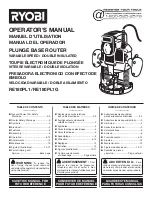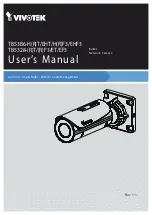
IES4005M User’s Guide
125
C
H A P T E R
1 4
ADSL
Use these commands to configure ATM virtual circuits (VCs) on DSL ports. You can then use the
commands in other chapters to apply settings like QoS, Transparent LAN Service (VLAN TLS), VLAN
translation and aggregation, transparent VLAN, and VLAN trunking to the virtual circuits.
ATM
Asynchronous Transfer Mode (ATM) is a networking technology that provides high-speed data
transfer. ATM uses fixed-size packets of information called cells. With ATM, a high QoS (Quality of
Service) can be guaranteed.
Permanent Virtual Circuits
A Permanent Virtual Circuit (PVC) is a logical point-to-point circuit between sites. PVCs are low-
delay circuits because routing decisions do not need to be made along the way. Permanent means
that the circuit is pre-programmed by the carrier as a path through the network. It does not need
to be set up or torn down for each session. PVCs are also called virtual channels.
The system can handle multiple IEEE 802.1p priority queues on a single PVC. You can also define up
to eight PVCs on a DSL port and use them for different services or levels of service. You set the
PVID that is assigned to untagged frames received on each channel. You also set an IEEE 802.1p
priority for each of the PVIDs. In this way you can assign different priorities to different channels
(and consequently the services that get carried on them or the subscribers that use them).
For example, you want to give high priority to voice service on one of the ADSL ports. First
configure a static VLAN on the system for voice on the port. Then do the following:
• Configure a channel on the port for voice service.
• Set the channel to use the PVID of the static VLAN you configured.
• Assign the channel a high priority.
LLC
LLC is a type of encapsulation where one VC (Virtual Circuit) carries multiple protocols with each
packet header containing protocol identifying information. Despite the extra bandwidth and
processing overhead, this method may be advantageous if it is not practical to have a separate VC
for each carried protocol, for example, if charging heavily depends on the number of simultaneous
VCs.
VC Mux
VC Mux is a type of encapsulation where, by prior mutual agreement, each protocol is assigned to a
specific virtual circuit, for example, VC1 carries IP, VC2 carries IPX, and so on. VC-based
Содержание IES4005M
Страница 4: ...Contents Overview IES4005M User s Guide 4...
Страница 13: ...13 PART I Introduction and Hardware Installation...
Страница 14: ...14...
Страница 20: ...Chapter 2 IES Chassis IES4005M User s Guide 20...
Страница 38: ...Chapter 4 Line Cards IES4005M User s Guide 38...
Страница 42: ...Chapter 5 Power Supply Unit IES4005M User s Guide 42...
Страница 46: ...Chapter 6 Fan Module IES4005M User s Guide 46...
Страница 58: ...Chapter 7 Cables IES4005M User s Guide 58...
Страница 64: ...Chapter 8 Hardware Installation IES4005M User s Guide 64 Figure 36 Removing a Line Card 1 2 3...
Страница 65: ...65 PART II Commands...
Страница 66: ...66...
Страница 78: ...Chapter 9 The CLI IES4005M User s Guide 78...
Страница 124: ...Chapter 13 Switch Features IES4005M User s Guide 124...
Страница 150: ...Chapter 20 MTU IES4005M User s Guide 150...
Страница 164: ...Chapter 23 Static Route IES4005M User s Guide 164...
Страница 192: ...Chapter 25 VLAN IES4005M User s Guide 192...
Страница 204: ...Chapter 26 VoIP IES4005M User s Guide 204...
Страница 210: ...Chapter 27 IEEE 802 1x Authentication IES4005M User s Guide 210...
Страница 211: ...211 PART III Troubleshooting Specifications Appendices and Index...
Страница 212: ...212...
Страница 220: ...Chapter 28 Hardware Troubleshooting IES4005M User s Guide 220...
















































